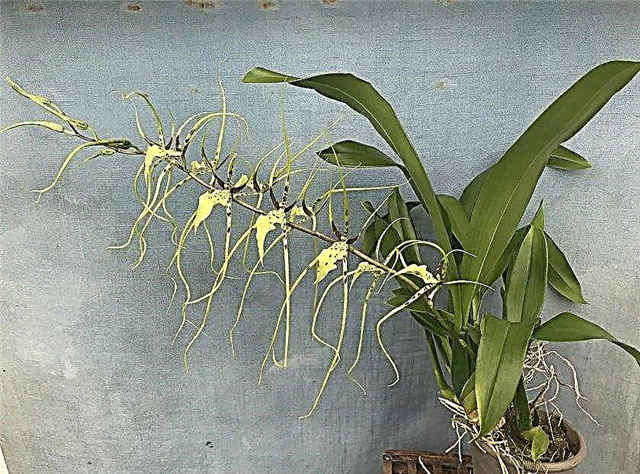Orchid spider or brassia is a perennial plant that can be found in tropical America, where it is very humid. But, like everyone else, it is just as sensitive to environmental factors.

Illumination
For this type of orchid, diffused bright light is predominantly. More often, they are placed on window sills on the east or west side. If you leave an orchid on the south windowsill, then an additional shadow is needed. On the windowsills on the north side, it is left only in the summer, in winter there will be insufficient light and flowering may stop. Throughout the day, the plant needs ten-hour lighting, so even if in the winter season it seems to you that there is enough light from the eastern side, you are mistaken.

There are unique species of orchids that grow on trees, in rocks and even underground. The latter are pollinated not by bees, but by underground animals.
Room temperature
The optimum temperature for the life of the plant is considered to be + 23 ... + 25 ° C. Sometimes, in order for the orchid to grow better, it is tempered by the temperature difference, between which there should be a difference of 5-6 degrees.

Experts recommend that when ripening new bulbs, as soon as they begin to round, lower the temperature to + 17 ° C. This method will accelerate the growth process. From May to September, take the pots out onto the balcony. At this time, the street is warm and light enough, which will keep the temperature regime normal.
Humidity
Since the natural habitat of orchids is tropical forests, room conditions should be suitable accordingly. Humidity in the room should be increased, in winter it is advisable to rearrange the flower from the window sill to another place, since the heat coming from the pipes will only destroy it. Keep your orchid in good shape by daily spraying or a humidifier.

Watering
Humidification of brassia is a very interesting method. In the summer, a flower pot is simply lowered into a bucket of water for 20-30 minutes, and then removed and allowed to drain excess fluid. In winter it is much simpler, and watering is not so frequent, but you still need to monitor the pseudobulbs so that they do not frown.
You need to often check the flower for new peduncles. With their appearance for 7 days, stop watering. The soil should literally become dry, or bulbs will appear instead of peduncles.
Earth mixture
The type of orchid itself already indicates how demanding it is, therefore, planting material should be suitable. Special soil can be bought at the store, or you can do it yourself by mixing sphagnum moss, pine bark and horse peat. Gardeners recommend not sparing moss and add charcoal to all this.
Top dressing

In specialized stores you can find many fertilizers for this particular plant, where a clear instruction for use will be painted on the packaging of each. The feeding process is carried out only 1 time in 4 weeks. Fertilize a spider orchid by combining either with spraying or with watering. In winter, top dressing is not recommended, especially if the room has low humidity - ensure peace.
One of the most expensive spices in the world is natural vanilla. She is the pod of one of the varieties of orchids.
Pests and diseases

Such a pest as a spider mite is considered a frequent guest on this plant. It is not difficult to deal with it, just use a warm shower for the orchid, approximately + 45 ° С. The occurrence of certain diseases may depend on the quality of care. If the soil is waterlogged and the room is cold, root rot will appear. In this case, the leaves begin to turn yellow and fade, and the flower itself falls off.












